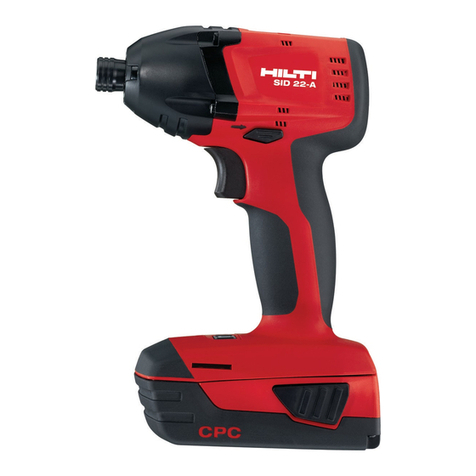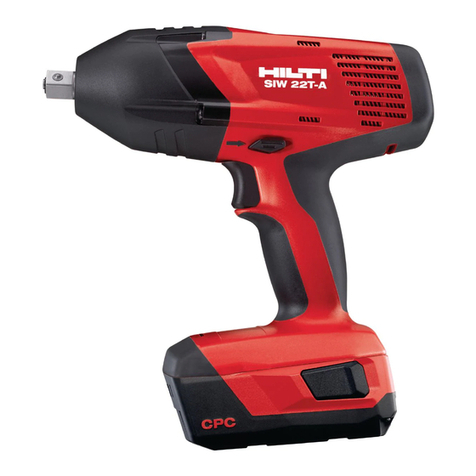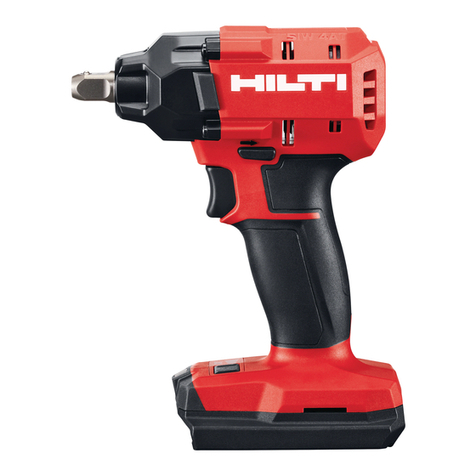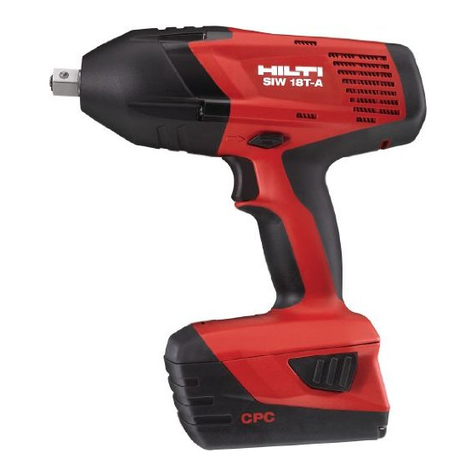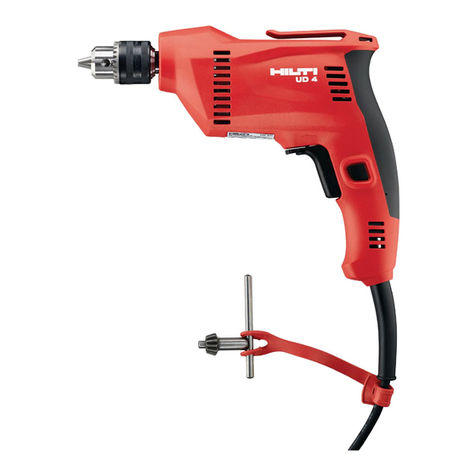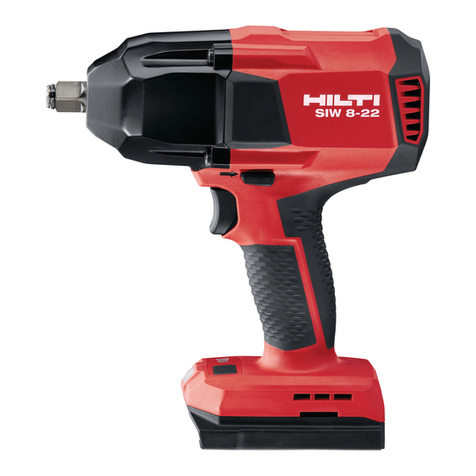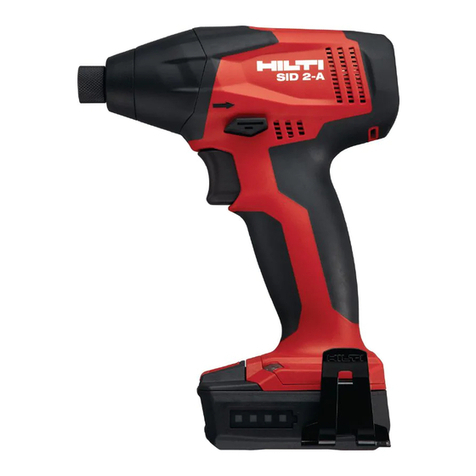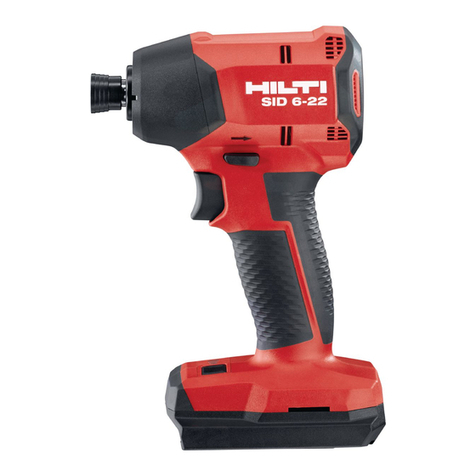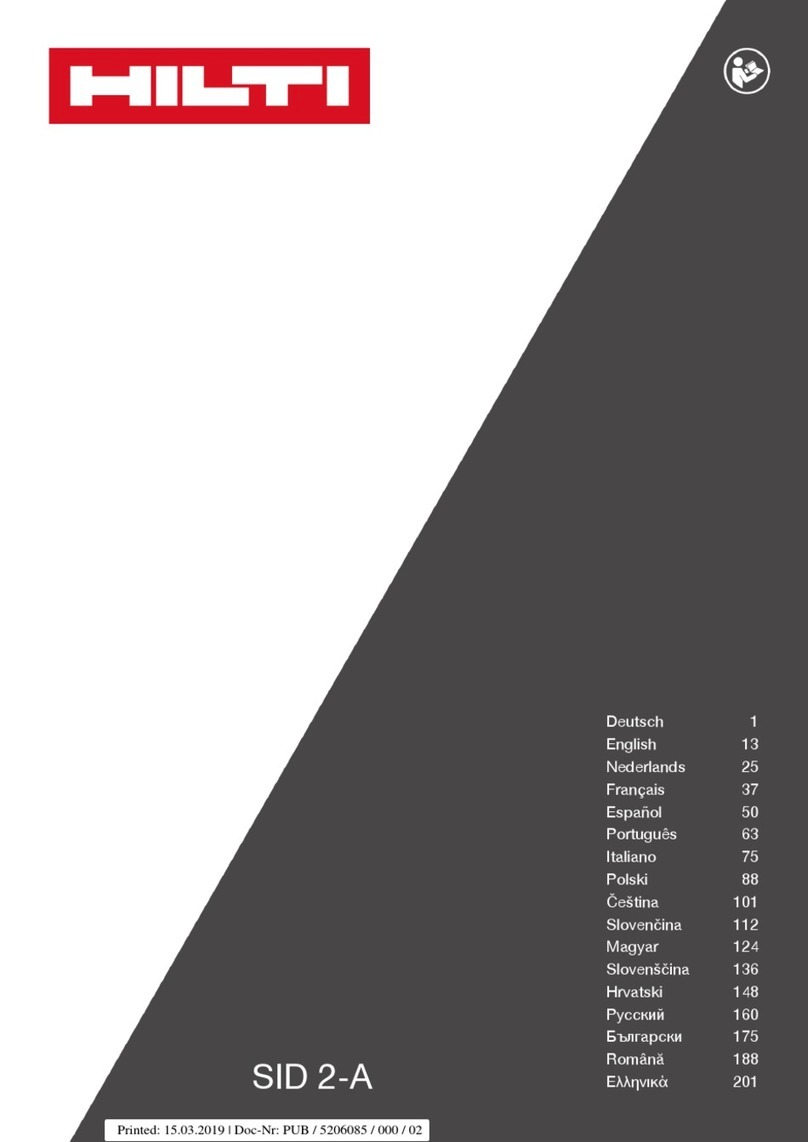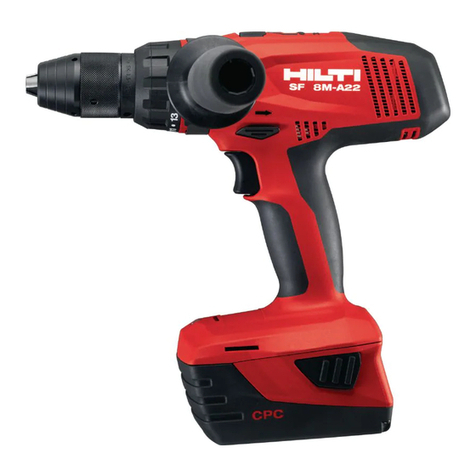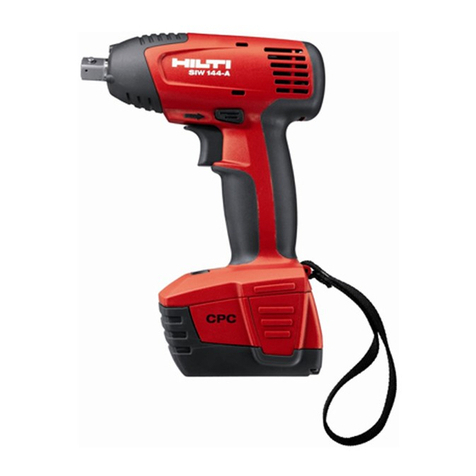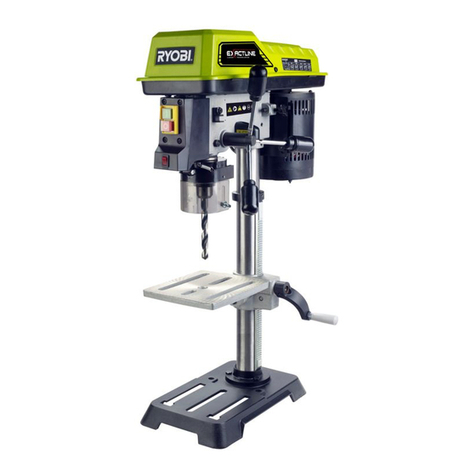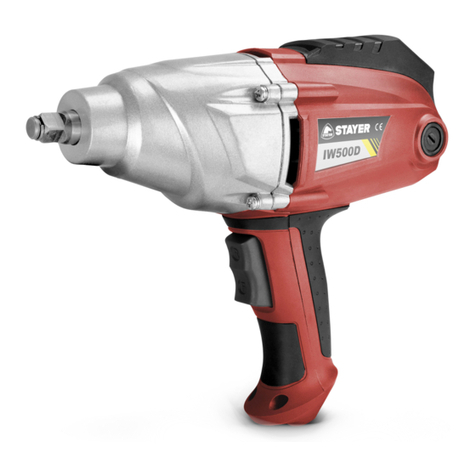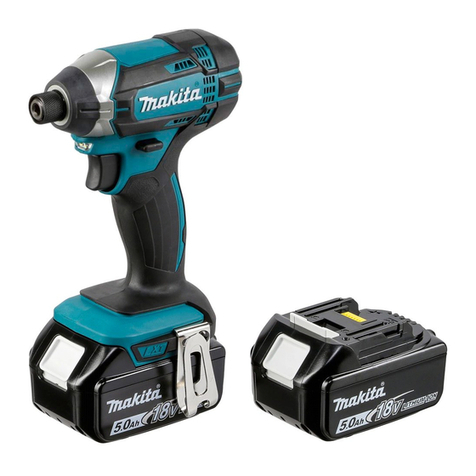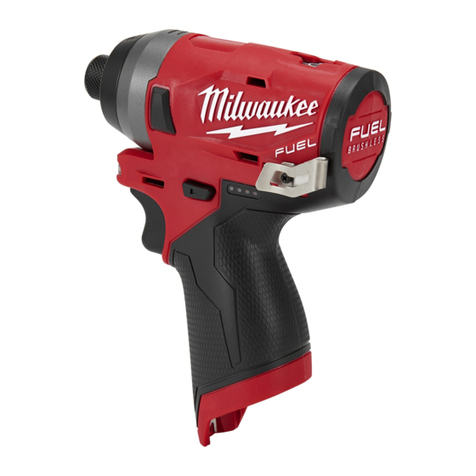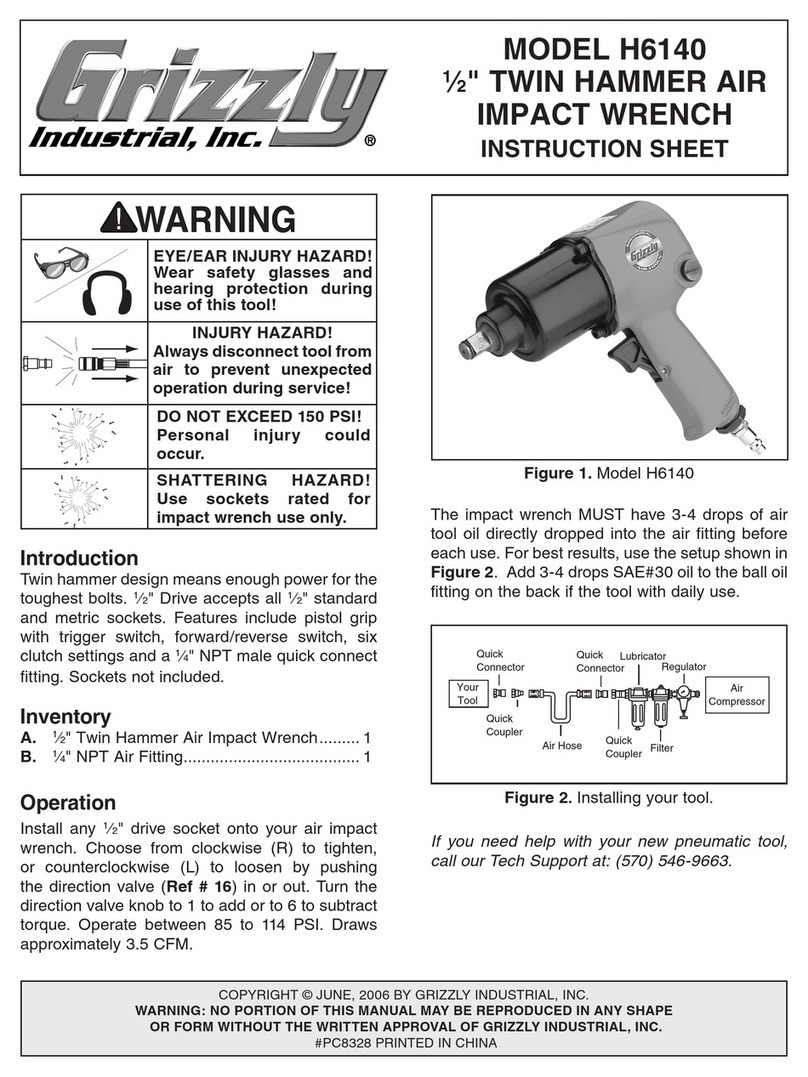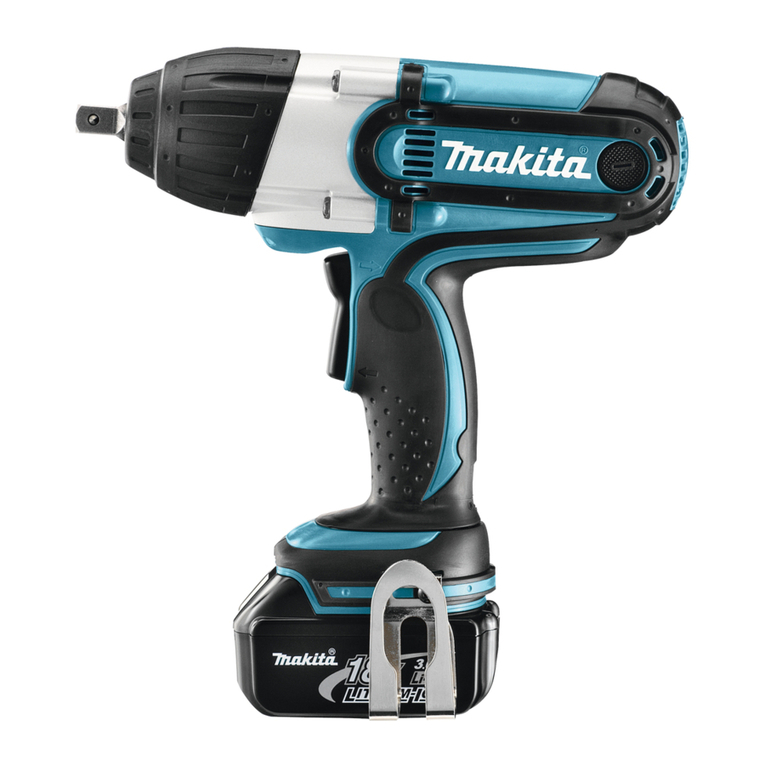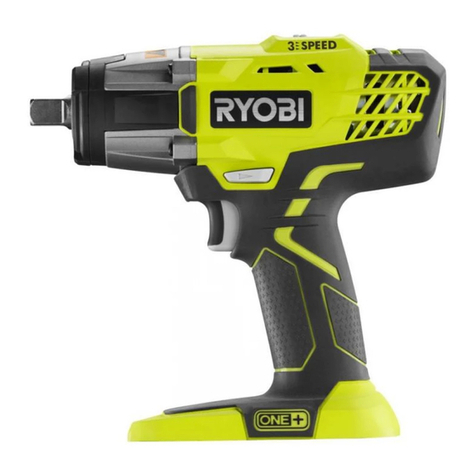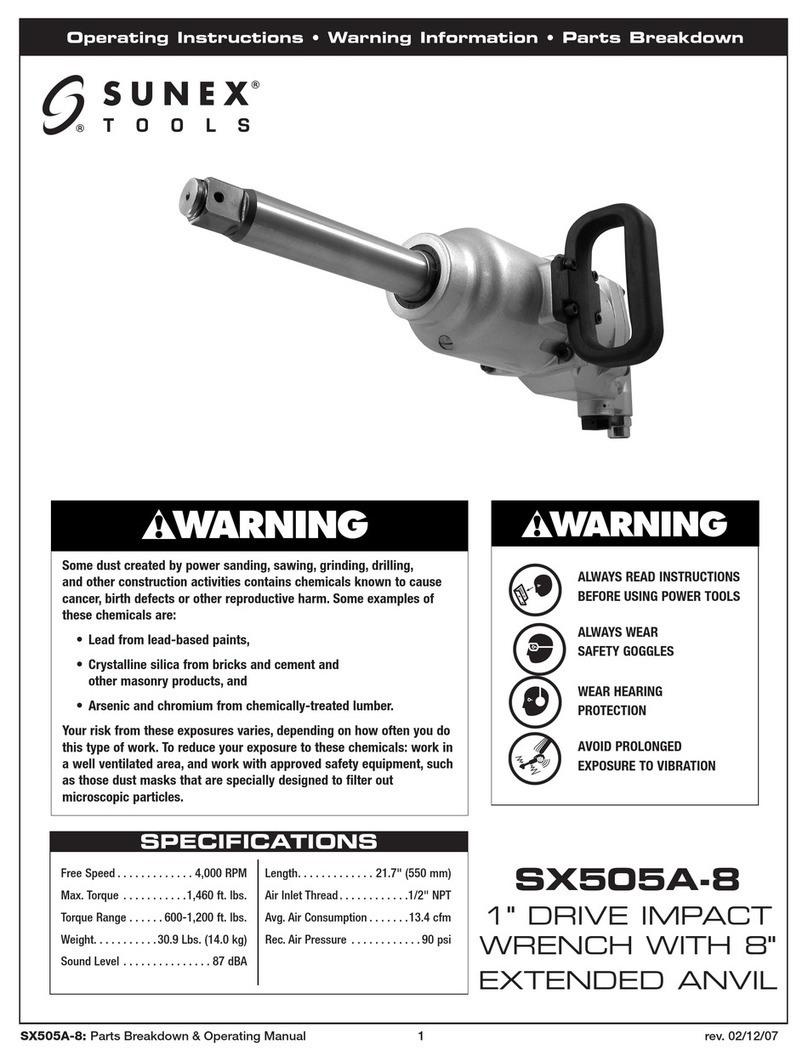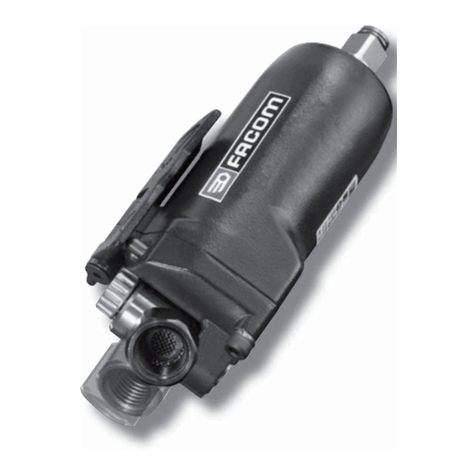5
2.2.2 Warnings for drivers
▶Hold power tool by insulated gripping surfaces, when performing an
operation where the fastener may contact hidden wiring or its own
cord. Fasteners contacting a "live" wire may make exposed metal parts
of the power tool "live" and could give the operator an electric shock.
2.2.3 Additional safety instructions
Personal safety
▶Tampering with or modification of the tool is not permitted.
▶Wear ear protectors. Exposure to noise can cause hearing loss.
▶Respiratory protection must be worn if the power tool is used without
a dust removal system for work that creates dust.
▶Improve the blood circulation in your fingers by relaxing your hands
and exercising your fingers during breaks between working.
▶Avoid touching rotating parts. Switch the power tool on only after
bringing it into position at the workpiece. Touching rotating parts,
especially rotating accessory tools, may lead to injury.
▶Activate the safety lock (forward/reverse selector switch in the middle
position) when changing accessory tools or batteries and before
storage or transportation of the power tool.
▶The power tool is not intended for use by debilitated persons who
have received no special training. Keep the power tool out of reach
of children.
▶Dust from materials, such as paint containing lead, some wood species,
concrete/masonry/stone containing silica, and minerals as well as metal,
may be harmful. Contact with or inhalation of the dust may cause
allergic reactions and/or respiratory or other diseases to the operator or
bystanders. Certain kinds of dust such as oak and beech wood dust
are classified as carcinogenic, especially in conjunction with additives
for wood conditioning (chromate, wood preservative). Material containing
asbestos may be handled only by specialists. Use a dust removal system
whenever possible. To achieve a high level of dust collection, use a
suitable vacuum cleaner. If necessary, wear a respirator appropriate
for the type of dust generated. Ensure that the workplace is well
ventilated. Follow national requirements for the materials you want
to work with.
▶The user and any other persons in the vicinity must wear suitable
eye protection, a hard hat, ear protection, protective gloves and
breathing protection while the power tool is in use.
Use and care of electric tools
▶Secure the workpiece. Use clamps or a vice to hold the workpiece
in position. The workpiece is thus held more securely than by hand and
both hands remain free to operate the power tool.
Printed: 16.06.2015 | Doc-Nr: PUB / 5070695 / 000 / 03

